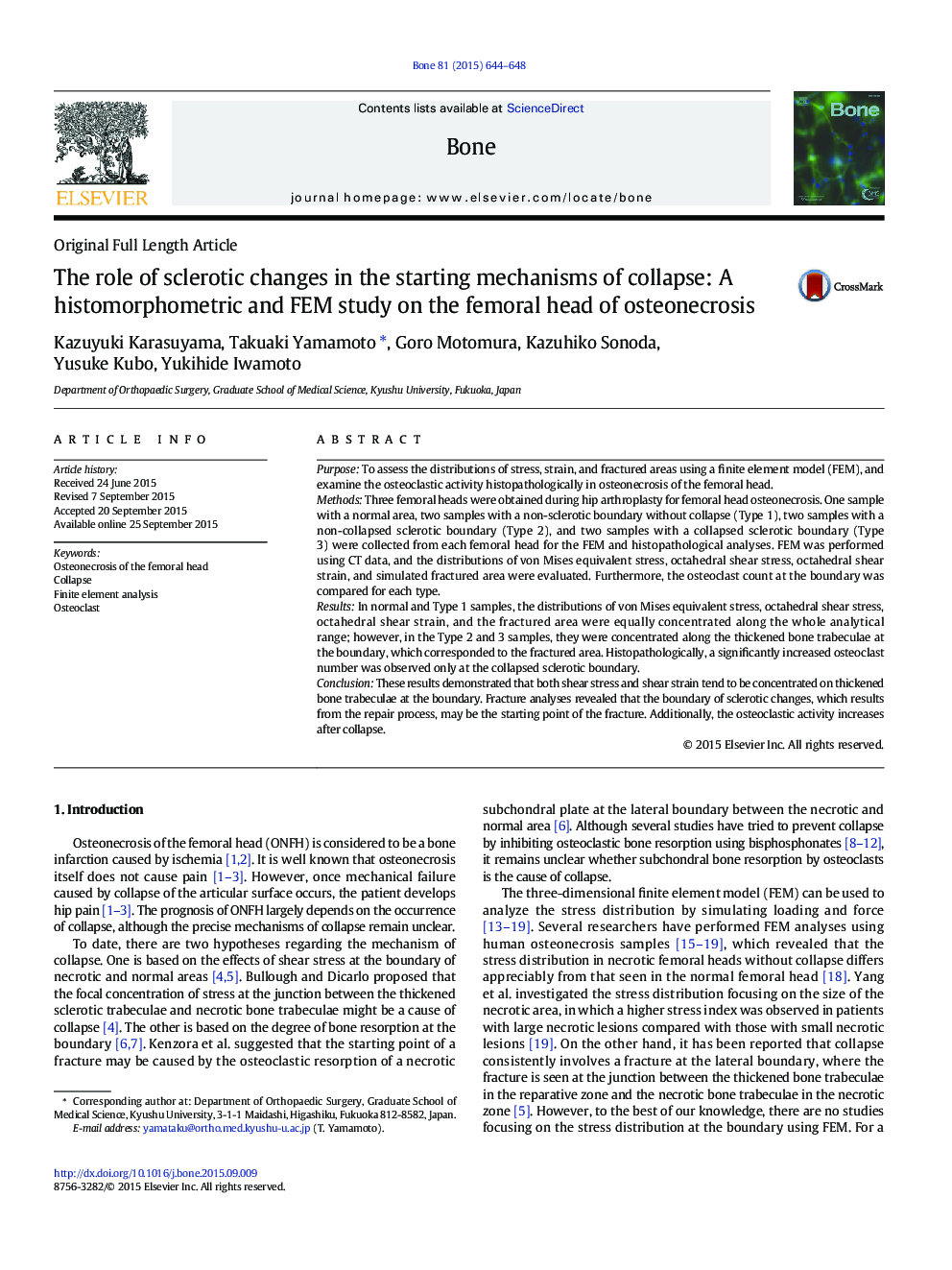| Article ID | Journal | Published Year | Pages | File Type |
|---|---|---|---|---|
| 5889356 | Bone | 2015 | 5 Pages |
â¢Both shear stress and strain were concentrated at the sclerotic boundary.â¢Fracture analyses showed the sclerotic boundary as the starting point of collapse.â¢Osteoclast numbers significantly increased at the boundary after collapse.â¢Osteoclast numbers were not increased at the boundary before collapse.
PurposeTo assess the distributions of stress, strain, and fractured areas using a finite element model (FEM), and examine the osteoclastic activity histopathologically in osteonecrosis of the femoral head.MethodsThree femoral heads were obtained during hip arthroplasty for femoral head osteonecrosis. One sample with a normal area, two samples with a non-sclerotic boundary without collapse (Type 1), two samples with a non-collapsed sclerotic boundary (Type 2), and two samples with a collapsed sclerotic boundary (Type 3) were collected from each femoral head for the FEM and histopathological analyses. FEM was performed using CT data, and the distributions of von Mises equivalent stress, octahedral shear stress, octahedral shear strain, and simulated fractured area were evaluated. Furthermore, the osteoclast count at the boundary was compared for each type.ResultsIn normal and Type 1 samples, the distributions of von Mises equivalent stress, octahedral shear stress, octahedral shear strain, and the fractured area were equally concentrated along the whole analytical range; however, in the Type 2 and 3 samples, they were concentrated along the thickened bone trabeculae at the boundary, which corresponded to the fractured area. Histopathologically, a significantly increased osteoclast number was observed only at the collapsed sclerotic boundary.ConclusionThese results demonstrated that both shear stress and shear strain tend to be concentrated on thickened bone trabeculae at the boundary. Fracture analyses revealed that the boundary of sclerotic changes, which results from the repair process, may be the starting point of the fracture. Additionally, the osteoclastic activity increases after collapse.
